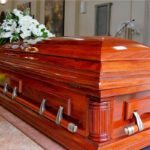Nicolae Ceausescu ruled Romania from 1974 through December 1989, when a revolution forced him and his wife Elena to flee the capitol.

The Shilluk of southern Sudan hold their kings responsible for drought. During prolonged periods of no rain the killing of kings is common.
They headed by helicopter to Snagov, a commune north of Bucharest then fled again to Targoviste, an ancient city on the Ialomita River. Here the army ordered their helicopter to land and placed the pair under arrest. On Christmas Day, they were put on trial under charges that included illegal gathering of wealth and genocide. The trial lasted two hours; they were convicted and sentenced to death. Soldiers led the couple, whose hands were tied behind their backs with clothesline, outside the building then opened fire. The communist leader and his wife were dead.
Or were they? The entire episode was filmed but there is a brief break in the video, between the time when Ceausescu and his wife are led outside and the start of the shooting. By the time the camera comes back bullets have been fired and the couple lies on the ground. Fearing the tombs might be desecrated authorities brought the bodies during the night to Bucharest’s Ghencea Cemetery, where they were buried in simple plots. Aging communist sympathizers continue to place flowers beside the graves to this day. But based on evidence like the break in the tape, the couples’ three children and other critics have continued to question just who in fact was executed. For years, the group tried to obtain permission to unearth the grave but state officials wouldn’t allow it. But last month, saying they had nothing to hide, authorities agreed to the exhumation. Cemetery officials dug up the wooden caskets and a team of pathologists took samples from the corpses and placed them into plastic bags. DNA tests will be performed, although results won’t be available for up to six months.
In attempting to squash the rebellion that ultimately overthrew him Ceausescu and his political police killed hundreds of Romanians, brutality that seemed to justify his swift execution. One only has to look to examples like Saddam Hussein or Louis XVI of France to find other leaders, tyrants or not, who were put to death after public opinion turned against them. Sometimes, the killing of kings takes an invasion, sometimes a revolution from within, but in a remote stretch of southern Sudan, it takes a lack of rain.
Among Sudan’s Shilluk, when there is reason to believe the king is not acting in the communities best interest an assembly is convened. The people can ultimately put the king to death, an outcome especially likely during times of drought. It is believed that the king has the power to make rain, and so when no rain falls the king is blamed. During drought, the king, knowing his end may be near will try desperately to bring about rain by performing sacrifices and praying to his fathers for assistance. If drought continues the king faces an ultimatum, make the rains fall or die.
The social anthropologist Declan Quigley spent significant time in southern Sudan in the 1980s and collected more than two dozen cases of regicide (the killing of a king) from the past century and a half. In one case from 1981 a king was executed by his half-son and others after a long period of drought. A goat was then sacrificed on the grave to prevent the king’s posthumous revenge. Police later arrested 22 people in association with the killing, but all of them were deemed to have acted appropriately and were later released, except the half-son.
The Finnish anthropologist Marta Salokoski studied regicide among the Owambo of northern Namibia. Among this tribe, it is believed that if a king dies under his own power he will take the entire kingdom with him. Thus, in order to avoid ruination of the kingdom, a sick king is swiftly executed. The method is usually suffocation. Salokoski, quoting an earlier text by Iituku describes the process:
“The face is covered with a soft animal skin, one hand clenches the neck, the other presses the mouth and nose. Alternatively, a sitting cub is pressed on the throat. It is usually a slave who does the strangling.”









